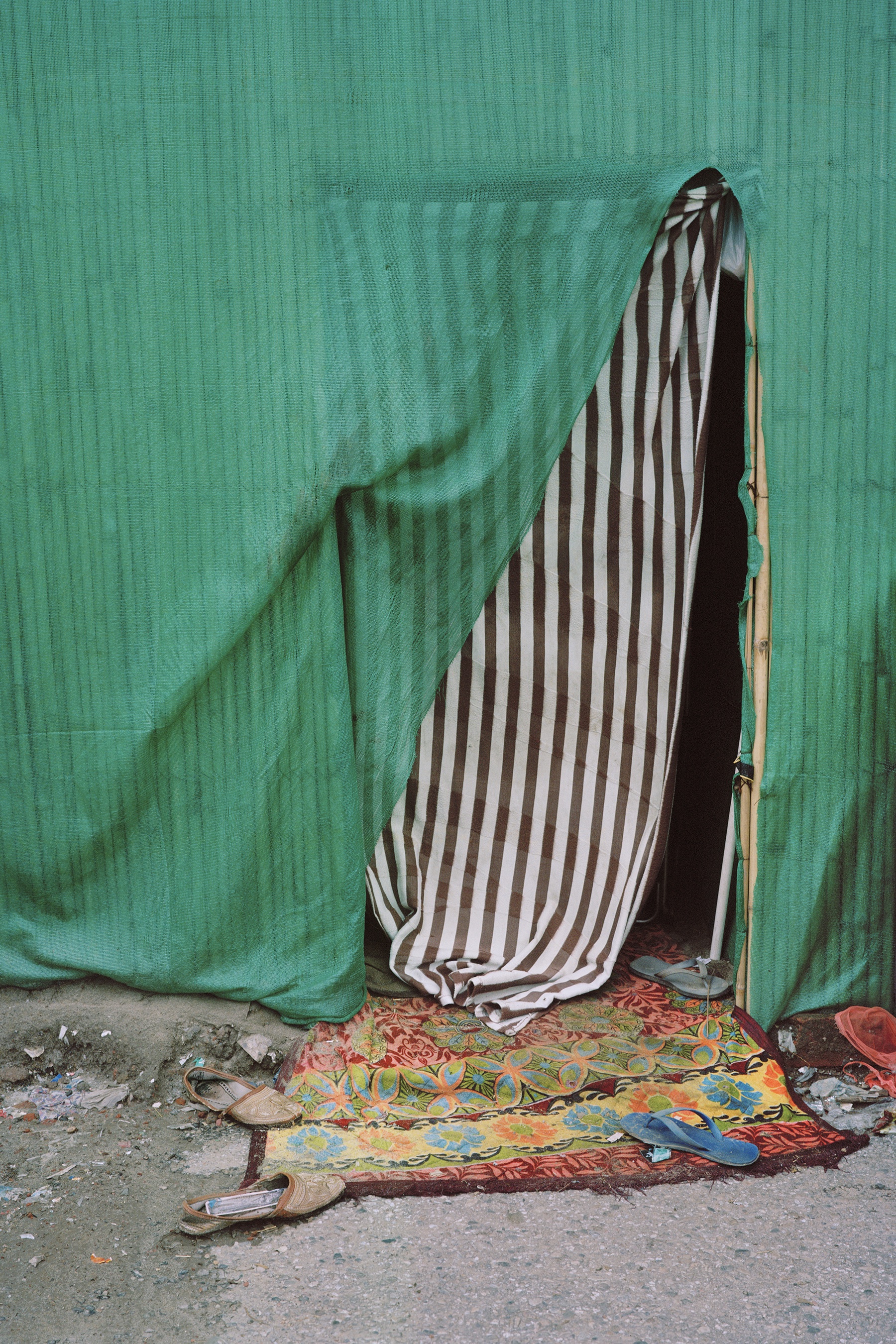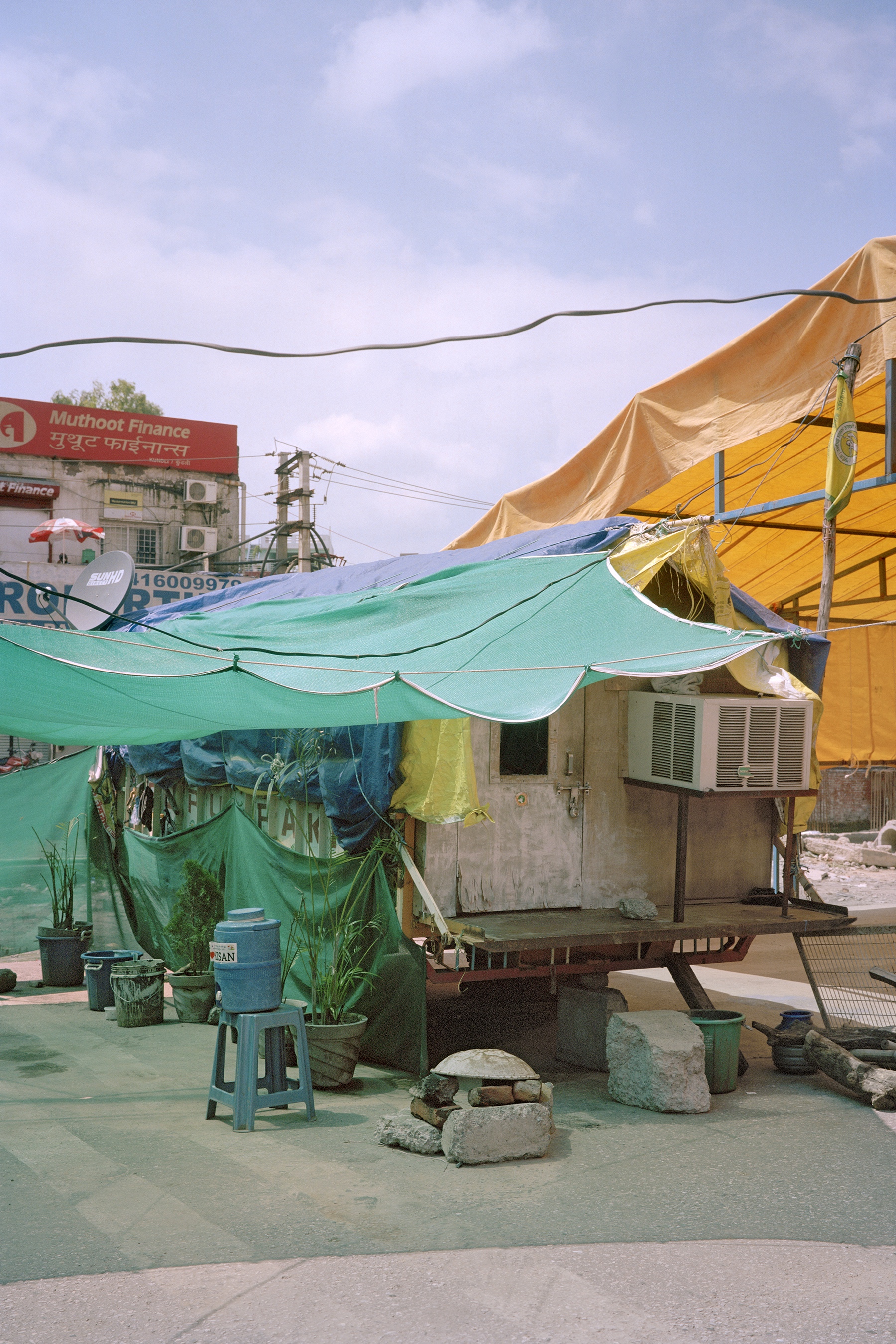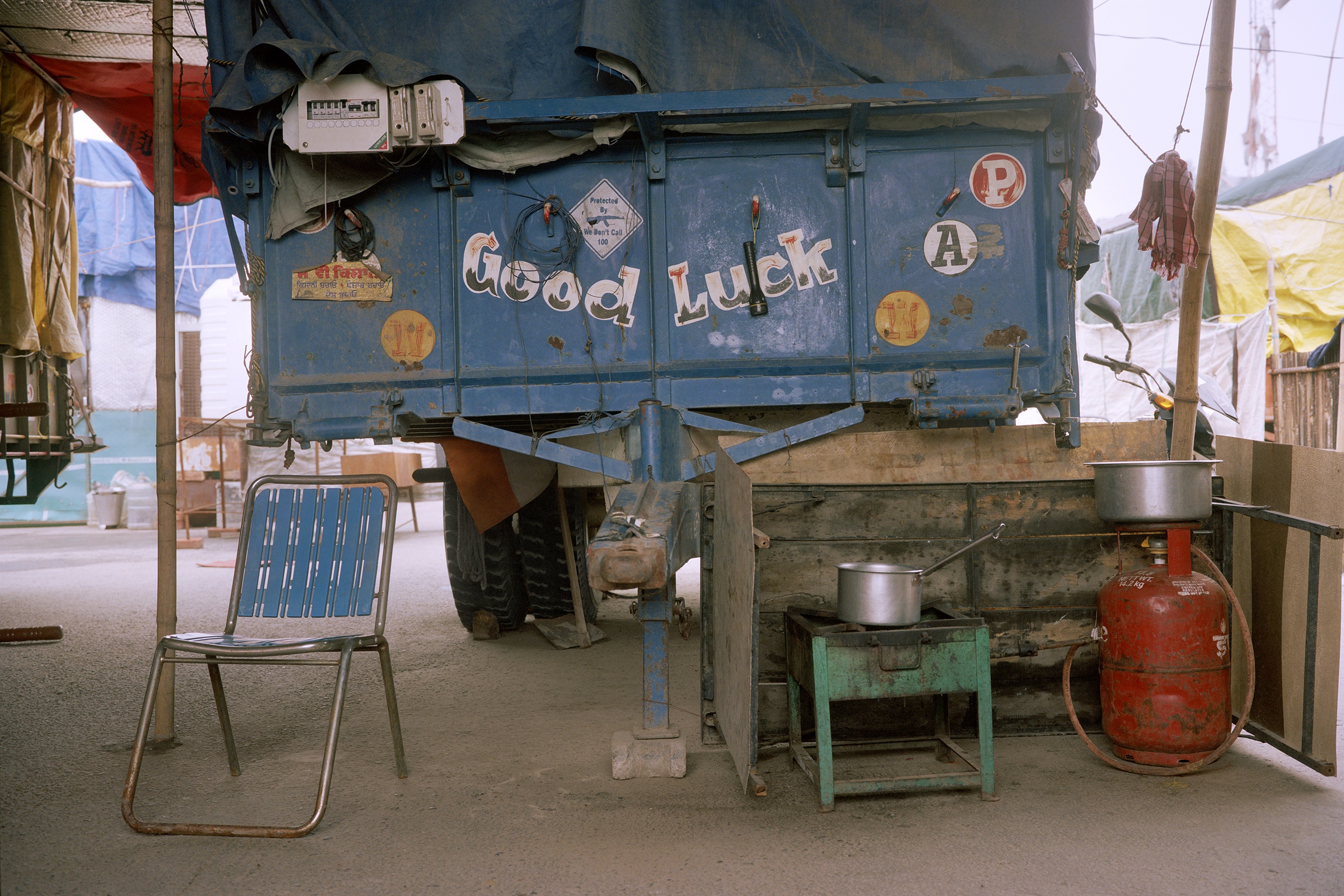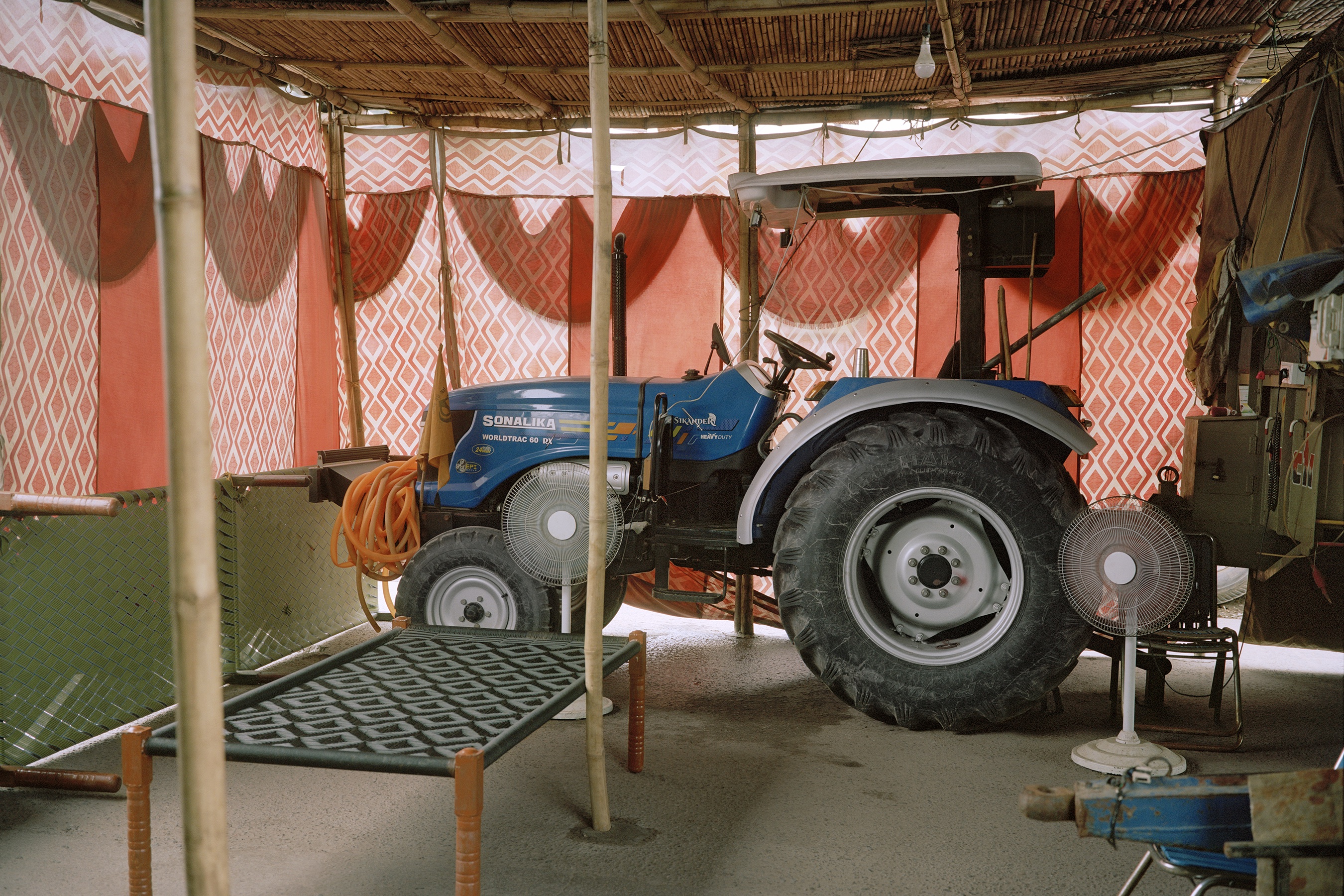All images © Gauri Gill
A Village on the Highway focuses not on the agricultural workers whose activism overturned the ‘black laws’, but the makeshift camps which allowed them to do it
When, in November 2020, thousands of farmers from Punjab and Haryana parked their vehicles (and grievances) outside New Delhi, photographer Gauri Gill went to join them. The workers were fighting the introduction of three farm acts – nicknamed the ‘black laws’ – which would dramatically reduce agricultural protections, potentially decimating the industry and lives of millions of farmers across the country. The march became what The Guardian called “probably the largest peaceful protests in the world,” and, ultimately, were successful (prime minister Narendra Modi announced the laws’ repeal on 19 November 2021). The mass gatherings had their own distinct visual character, captured by Gill in A Village on the Highway. Tarpaulins drape over makeshift huts and trucks converted into shelters, while behind the sheets, thin mattresses and simple tin crockery speak to months spent on the roadside – life relocated by necessity.
“I’ve been interested in rural concerns since I first began visiting friends in the small villages of Western Rajasthan in the late 1990s,” says Gill, herself from a Punjabi family with agricultural roots. “I am well aware of the two tracks India runs on – or perhaps the world itself today – with a gaping and impenetrable distance between urban and rural lives.” Gill wanted to see this gap closing for herself – the spectacle of direct action meeting political intransigence. “I was deeply moved by what I found, their spirit of utter generosity and tenacity in the face of obduracy and cynical disinterest in their fight for survival,” she says.


A Village on the Highway is on show at the V&A’s newly reopened Photography Centre, presented as 48 prints in two separate grids, creating a sense of uniformity but also duration, like scanning the pages of a calendar. Gill documents a cause without its foot soldiers, the architecture rather than individuals of resistance. “I began to observe an aspect of the protests that I wasn’t seeing depicted and I thought important to record, which is the very ingenious structures that the farmers were creating in order to withstand the long passages of time,” she explains. Trucks were continually modified to withstand the weather, while libraries, vegetable patches and other home comforts arrived over time. “[The farmers] had to find ways to transform their vehicles as well as make ephemeral structures from bamboo, cardboard, tarpaulin and so on, to enable their lives and the protest. I was interested in these speaking structures or deeply beneficent dwellings.”
The full project moves between a focus on singularity and collectivity. There is an intimacy to the ways different farmers have adapted their trucks with ladders, flags and rugs, but they are united by their circumstances. More than 700 farmers died during the year-long protests, which makes the absence of human subjects somewhat ominous. In one picture, a man’s legs are visible, a moment of rest away from the active protest. The empty images carry a sense of abandonment, reflecting the precarity the industry faced before the laws were repealed.

“I am interested in modalities of survival – in how people in precarious circumstances continually find ways to negotiate with their circumstances, to resist but also to repair”
Prasad Shetty, a researcher who has contributed an essay to Gill’s project, sees the protests in spatial terms, their very existence modifying the politics of the city. “The fuzzy and unclear spaces of Delhi’s borders lent themselves, without compromise, to hold the practices and politics of everyday life,” he writes. “It was in Delhi’s entranceways and exits that became host to one of the most powerful resistances of our times… it was an extension of everyday life, it was life.”
Gill connects the series to her other projects, which focus on village activities and marginalised communities. Acts of Appearance saw her work closely with members of an Adivasi community in Jawhar district, Maharashtra, while the exhibition Acts of Resistance and Repair combined over 200 works in a comprehensive overview of Gill’s practice. “I am interested in modalities of survival – in how people in precarious circumstances continually find ways to negotiate with their circumstances, to resist but also to repair,” Gill says. Still the farmer protests stand out. “I was amazed at the creativity stemming from urgent necessity,” she concludes.
Gauri Gill, The Village on the Highway is at the Victoria and Albert Museum, London, until 20 April 2024. The V&A’s new Photography Centre is open now

